The Grand Canyon is a stunning natural wonder that attracts millions of visitors each year. For those planning to explore this majestic landscape, understanding the nuances of day hiking in the Grand Canyon is essential. With its diverse trails, breathtaking views, and unique weather conditions, hikers can find an adventure suited to their skill level and interests. This guide will provide crucial tips and insights to ensure a successful hiking experience at the Grand Canyon.
Understanding the Grand Canyon’s Geography
The Grand Canyon can be divided into two main areas: the South Rim and the North Rim. Although they are separated only by the canyon itself, driving between the two rims can take up to four or five hours. Interestingly, visitors can reach Zion National Park in Utah from the North Rim faster than they can reach the South Rim. Consequently, it is beneficial for hikers to consider these two areas as separate parks and plan their visits accordingly.
Choosing the Right Rim
Most first-time visitors to the Grand Canyon tend to gravitate towards the South Rim, which is open year-round. In contrast, the North Rim closes during the winter months due to heavy snowfall. The South Rim offers a variety of day hiking opportunities with several trails to choose from. For those looking for accommodation, staying in Grand Canyon Village is highly recommended. Although it may be pricier and challenging to book, it places visitors right in the heart of the action, with restaurants and shuttle buses to various hiking trailheads.
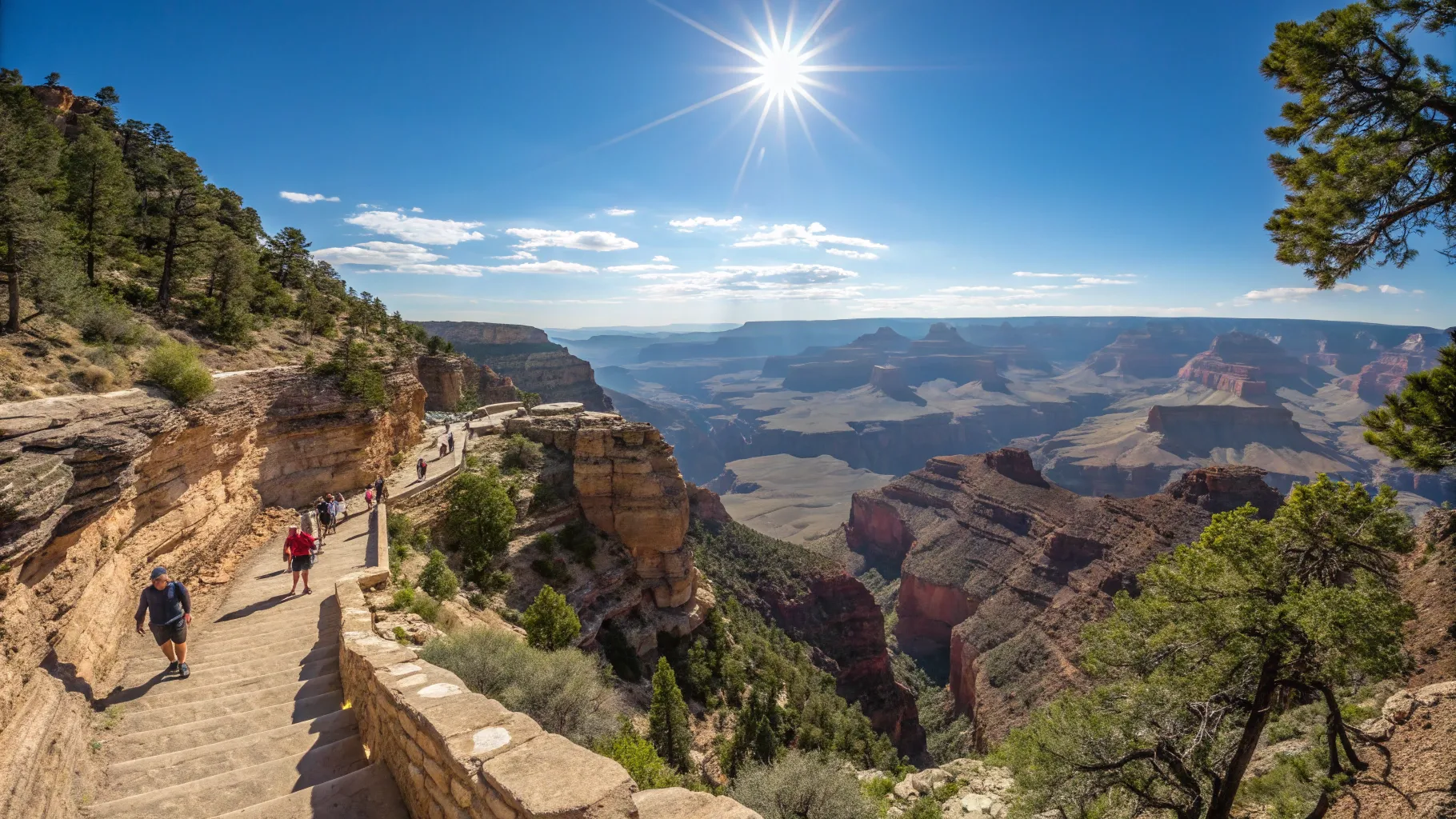
If securing a spot in Grand Canyon Village proves difficult, visitors can consider staying in nearby towns, such as Tusayan, located just ten minutes south of the park. This area offers a variety of hotels and basic services, often at more affordable rates than those found within the National Park. For early risers, driving into the park before 6:00 AM allows for easier access, while later arrivals may face long lines at the entrance.
Preparing for the Hike
One of the most useful resources for hikers is the general store located in Grand Canyon Village. This store provides opportunities to rent or purchase camping and hiking gear. For those who may not have the right equipment, renting trekking poles or other essentials can be a lifesaver.
Weather Conditions
The weather at the Grand Canyon can be unpredictable, especially at the South Rim. While the area may appear desert-like, it is not uncommon for snow, blizzards, and thunderstorms to occur. Before embarking on a hike, checking the weather forecast is crucial. For instance, one visitor experienced a sudden blizzard in March, requiring them to purchase winter clothing and crampons to navigate icy trails.
In the summer months, temperatures can soar, making it essential to hydrate adequately. The temperature at the canyon’s bottom, especially near Phantom Ranch, can be significantly warmer than at the rim—often by 20 to 30 degrees Fahrenheit. Therefore, it is vital for hikers to prepare for varying weather conditions.
Trail Options for Day Hikes
When selecting a trail for a day hike at the South Rim, several options are available, each offering unique experiences:
- Bright Angel Trail: This trail descends to the Colorado River and is popular among hikers. While it is recommended to avoid hiking all the way to the river in a single day due to its difficulty, a hike to Plateau Point, which provides stunning views of the river, is a great alternative. The trail features water stations at intervals, making it a good choice for those needing to refill their hydration supplies.
- South Kaibab Trail: Known for its spectacular views, this trail is used to resupply Phantom Ranch with mules. It is more challenging than Bright Angel and requires taking a shuttle to the trailhead. Hikers can choose from various distances, ranging from 2 to 6 miles for a day hike.
- Grandview Trail: This trail is more remote and is an old mining route from the 1890s. It is considered one of the more difficult day hikes, with a steep ascent to Horseshoe Mesa, which features an abandoned mine. It is best suited for experienced hikers.
- Hermit Trail: Located on the other side of the Grand Canyon, this trail is less popular and requires a shuttle bus for access. It offers a quieter hiking experience, away from the crowds.
For first-time hikers, Bright Angel Trail is often recommended due to its central location, availability of water, and varied options for hiking distances. More information about these trails can be found on hiking websites.
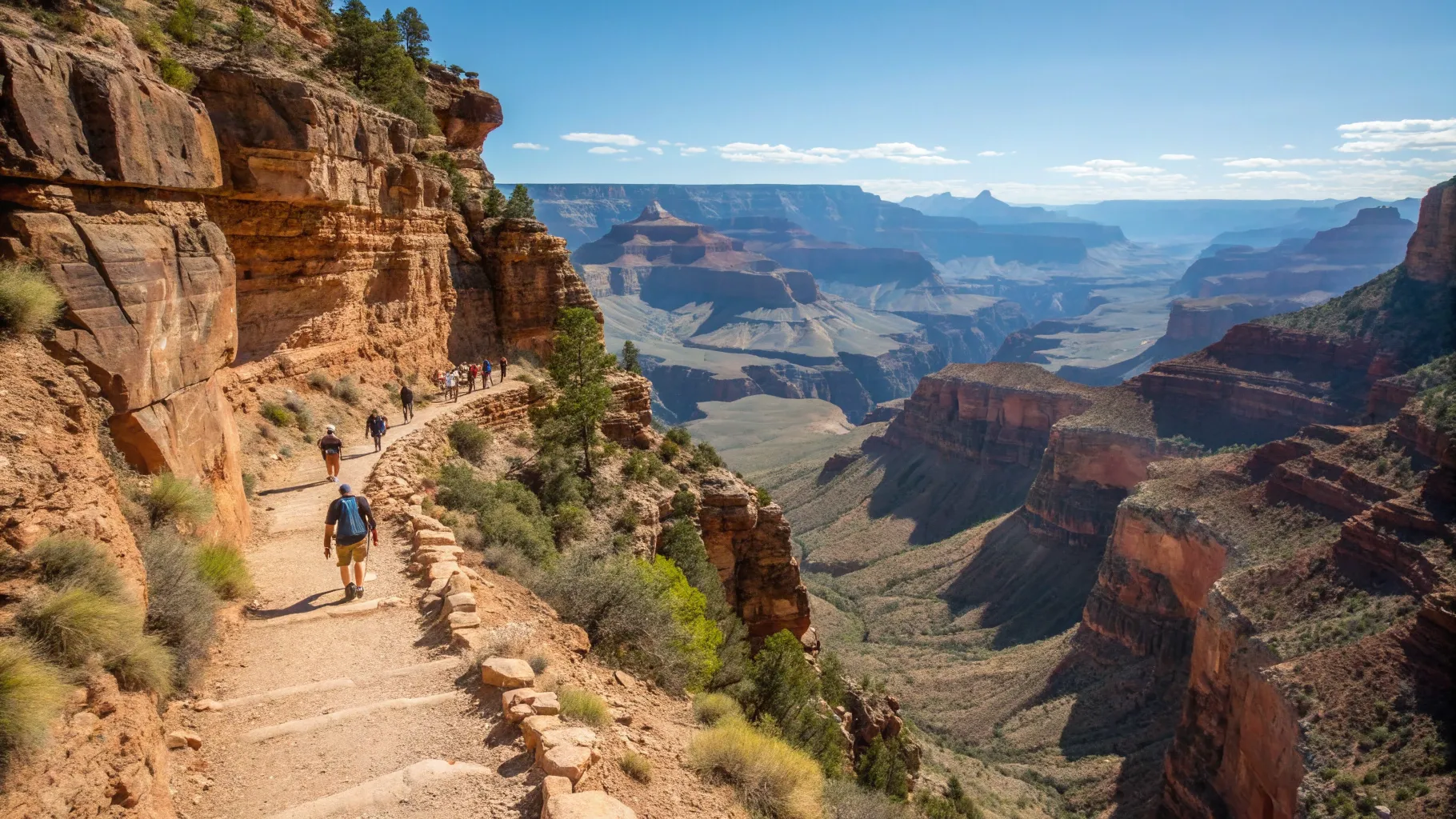
Realistic Hiking Plans
Hikers should be realistic about their abilities when planning hikes in the Grand Canyon. Completing a hike into the canyon and back in a single day is feasible for many, but attempting multiple hikes can be overwhelming given the challenging climbs back up. When starting a hike, it is easy to descend quickly due to the gradual slope, but the return climb can be taxing.
For example, the Bright Angel Trail has a gradient of about 10%, while other trails, such as Grandview and Hermit Trail, can reach gradients of 20%. Hikers should be conscious of their stamina and should not push themselves beyond their limits. A rough guideline is to plan for a return hike to take at least twice as long as the descent.
Essential Gear and Supplies
Proper preparation involves bringing sufficient water and snacks. Many trails, such as South Kaibab, lack water sources, making it essential to carry adequate hydration. A hydration backpack with at least three liters of water is recommended. Even on trails with water stations, hikers should not rely solely on these sources due to potential closures or malfunctions in the water pipeline.
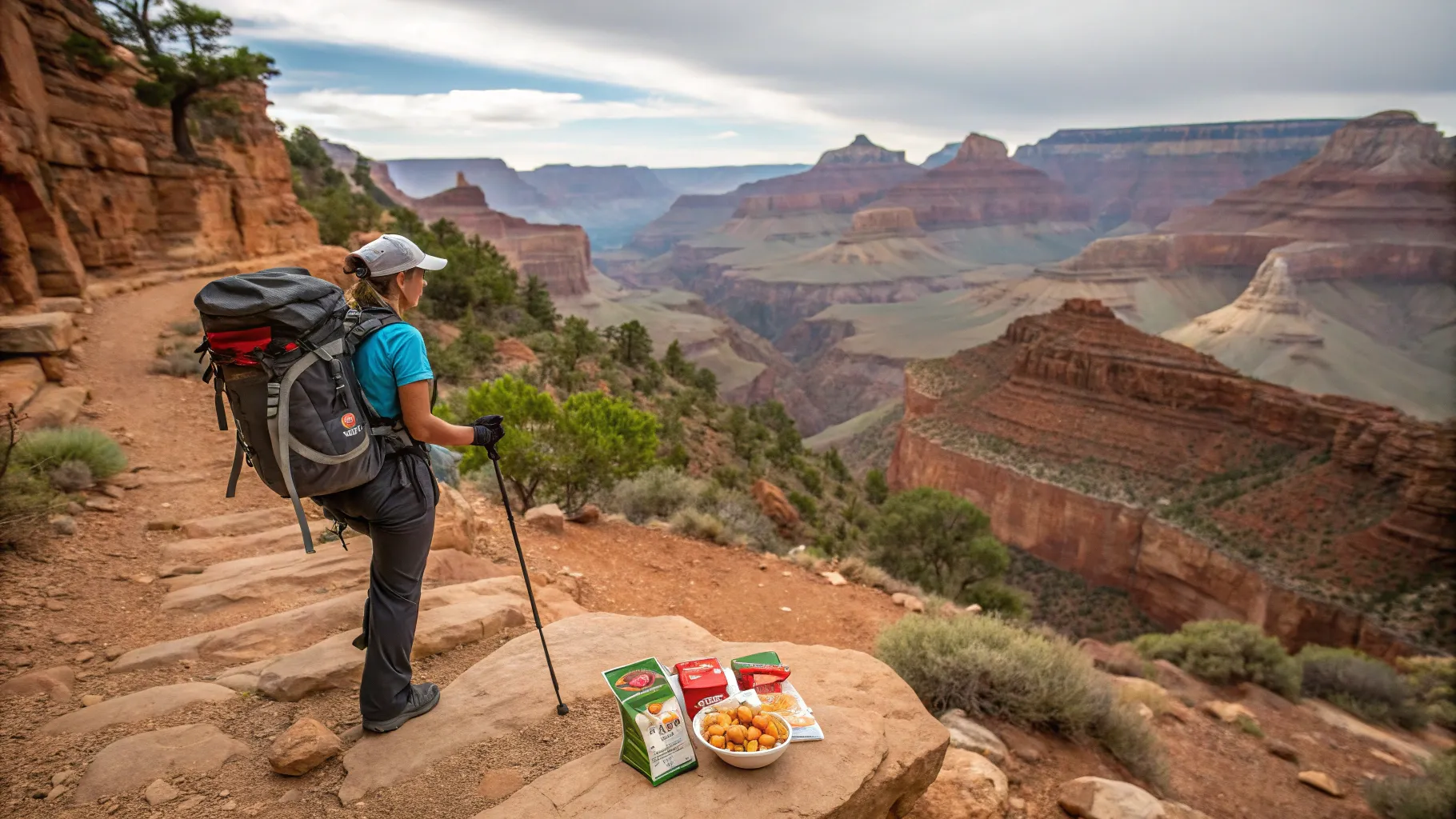
Snacks are also important, especially for the ascent. Many hikers find energy gels or pureed fruit packets easier on the stomach during challenging climbs. Trekking poles can provide additional support while navigating the trails, particularly on steeper sections.
Trail Etiquette and Safety
Both Bright Angel and South Kaibab trails are shared with mules, which are used to transport supplies and visitors. Hikers should be aware of their surroundings and follow the guidelines when encountering mule trains. The trails are four feet wide, and hikers should move to the canyon side to allow mules to pass safely.
For those who have a fear of heights, the well-maintained trails of Bright Angel and South Kaibab are generally safe, with no extreme edges. However, trails like Grandview and Hermit may present more primitive conditions with potential drop-offs. It is advisable to view 360-degree videos of these trails to gauge comfort levels before hiking.
Dealing with Heat and Other Hazards
Summer hikes can lead to heat-related illnesses if proper precautions are not taken. Hikers should stay hydrated and take breaks in shaded areas to cool down. A common mistake is attempting to hike with minimal water and supplies. Visitors should be mindful of their limits and plan accordingly to avoid exhaustion.
Conclusion
Day hiking in the Grand Canyon offers unforgettable experiences and breathtaking views. By understanding the park’s geography, choosing the right trails, preparing adequately, and practicing safety, visitors can ensure a memorable adventure. For those interested in further resources, the Stay Copper Rock website provides valuable insights into vacation rentals near the Grand Canyon and other outdoor activities in Southern Utah.
Frequently Asked Questions
What is the best time to hike in the Grand Canyon?
The best time to hike in the Grand Canyon is during the spring and fall months when temperatures are milder and the weather is more predictable.
Are there guided hikes available?
Yes, there are guided hikes available through various companies that offer expert-led tours of the Grand Canyon’s trails.
How should I prepare for sudden weather changes?
Check the weather forecast before your hike and pack layers, including rain gear, to prepare for sudden changes in weather.
Is it safe to hike alone in the Grand Canyon?
While many people hike alone, it is recommended to hike with a partner for safety, especially on more challenging trails.
Can I bring my dog on the trails?
Dogs are not allowed on most trails in the Grand Canyon, except for specific areas around the rim. Always check the park regulations before bringing pets.

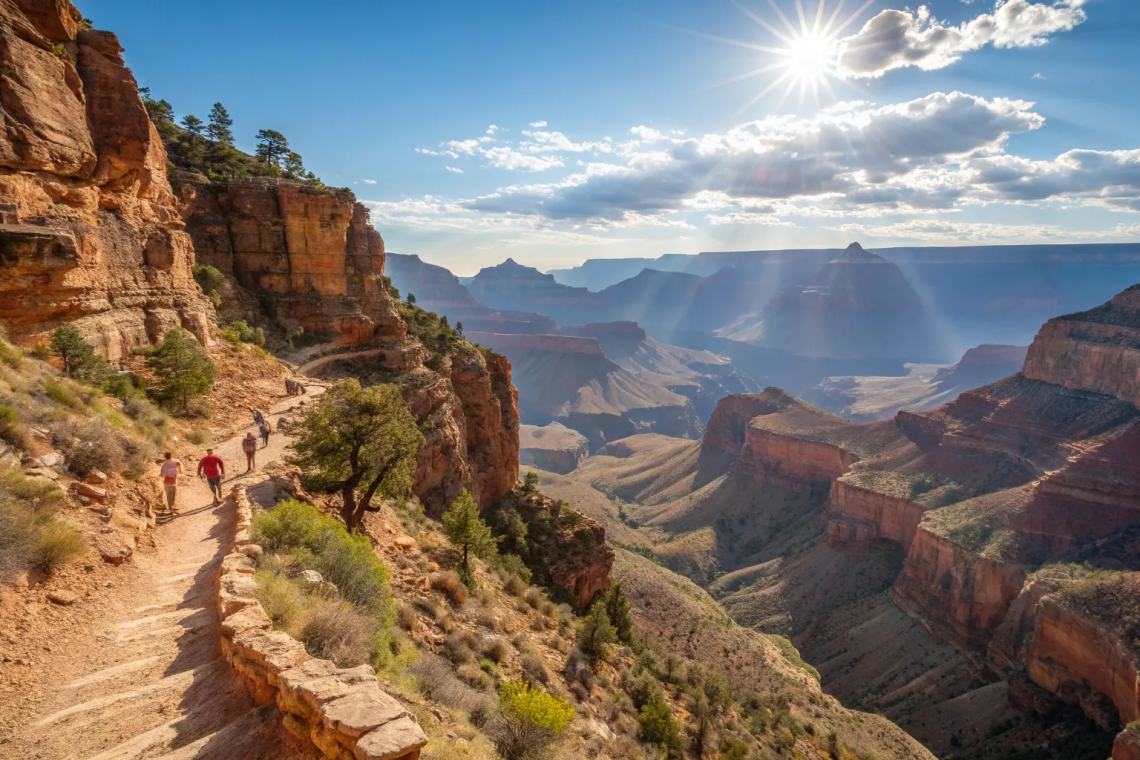



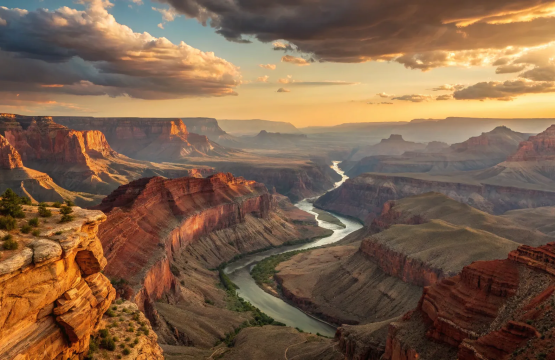
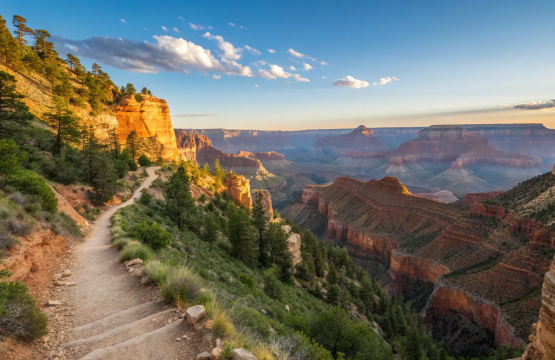
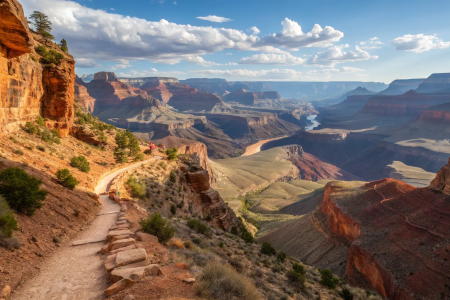
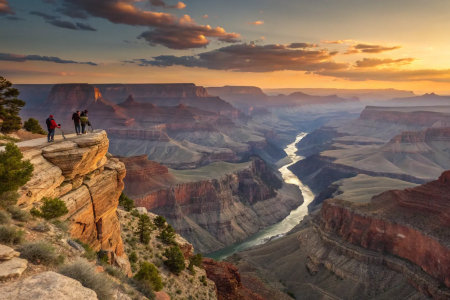
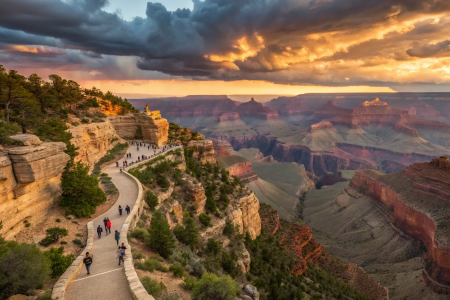

Join The Discussion